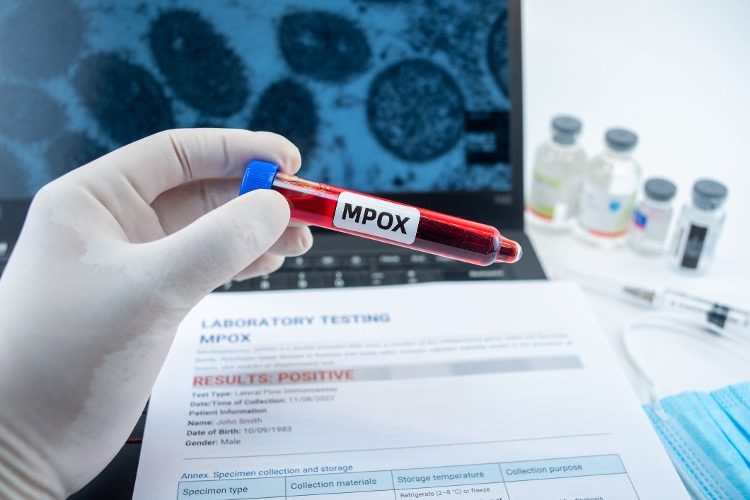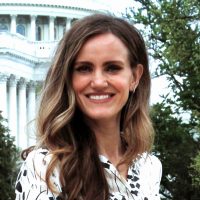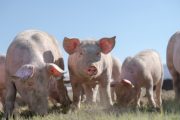
The World Health Organization (WHO) has announced a comprehensive global strategy to halt the transmission of mpox, formerly known as monkeypox. The new plan, unveiled on Monday, focuses, in part, on a “strategic vaccination” campaign aimed at curbing the spread of the virus. The initiative will run from September 2024 to February 2025, supported by a $135 million fund.
WHO’s Strategic Plan
According to the executive summary of the plan dubbed the Global Strategic Preparedness and Response Plan (SPRP), the global monkeypox outbreak, which began in 2022, has resulted in more than 100,000 confirmed cases in 116 countries. The “rapid spread” of the Clade 1b strain and its mutations, such as Clade 1a and Clade 2, in eastern Democratic Republic of the Congo (DRC) and neighboring countries, as well as their detection in Sweden and Thailand, were interpreted as a “growing threat” by the WHO. This led to a declaration of a Public Health Emergency of International Concern (PHEIC) on August 14, 2024.
The WHO’s new plan provides a framework for action, focusing on “enhanced surveillance, timely detection, and rapid response” in high-risk areas.
The plan includes “strategic vaccination efforts” for those at highest risk, such as close contacts of recent cases and healthcare workers, and calls for global cooperation to “increase vaccine access,” particularly in low- and middle-income countries.
The declared primary goal of the plan is “to stop outbreaks of human-to-human transmission of mpox and mitigate its impact on human health through coordinated global, regional, and national efforts.” This should be achieved via “harmonized strategies, collaborative decision-making, and transparent information sharing,” which is arguably a euphemism for global governance by the WHO bureaucrats.
Geography of the Spread
The WHO identifies varying levels of mpox risk across different regions:
Eastern DRC and Neighboring Countries: High risk due to the rapid spread of Clade 1b mpox virus, particularly among vulnerable populations such as internally displaced people and sex workers.
Endemic Areas in the DRC: Continued high risk from Clade 1a mpox virus, primarily affecting children through various transmission routes.
West, Central, and East Africa: Moderate risk due to the ongoing circulation of Clades 1 and 2, impacting both children and adults.
Other Regions Globally: Moderate risk from imported cases and community transmission of Clade 2b, especially among men who have sex with men (MSM).
It is these countries and regions that the WHO is targeting with its plan.
Vaccination Efforts
In addressing the monkeypox “emergency,” the WHO places a strong emphasis on costly and dubious strategies such as vaccines, which are considered an “essential component” of the global preparedness and response.
While no vaccines are prequalified or hold emergency-use licenses from the WHO, the organization is “considering” several potential vaccine candidates. That includes MVA-BN, the only monkeypox vaccine currently approved in the United States and Switzerland, Canada, the EU, and the United Kingdom. In the United States, it is marketed as JYNNEOS.
It was initially approved by the U.S. Food and Drug Administration (FDA) for use in adults 18 years and older who are at high risk for smallpox and monkeypox.
However, during the 2022 monkeypox outbreak, the FDA expanded the emergency use authorization (EUA) for JYNNEOS to allow its use in a wider population, including those under 18 years old, and to permit alternative dosing strategies, ostensibly due to vaccine supply constraints. Thus, while JYNNEOS has full FDA approval for certain uses, the EUA expansion allows for broader application in response to public-health emergencies while providing vaccine makers with legal immunity for any side effects.
Other candidates on WHO’s list are LC16m8, used mainly in Japan for both smallpox and monkeypox, and ACAM2000, which received emergency use authorization in the United States. According to the FDA warning, the shot can cause myocarditis and other heart issues.
In addition to these, the WHO highlights BioNTech’s mRNA vaccines for monkeypox, which are currently in preclinical studies. Those include BNT166a and BNT166c. Both are developed in collaboration with the Coalition for Epidemic Preparedness Innovations (CEPI), funded by vaccine enthusiast Bill Gates.
Triggering a strong sense of déjà vu, the WHO optimistically provides that these “next-generation mRNA vaccines … are showing promising preclinical results, with robust immune responses and complete protection in challenge studies.” BioNTech shots are supposedly “designed to provide broad protection against MPXV and related orthopoxviruses.”
To meet the anticipated vaccine “demand,” particularly in low- and middle-income countries, the WHO emphasizes the need to “scale up global production and distribution” of vaccines. This includes “accelerating regulatory evaluations for both new and existing vaccines,” meaning the speedy assessment of the vaccines, which, as attested during the Covid pandemic, inevitably compromises the required thoroughness of such an assessment, and does not allow for the long-term safety evaluation.
The WHO also underscores the importance of building public trust in new vaccines through “effective communication and community engagement” to achieve “high vaccination coverage.”
Finally, the WHO is preoccupied with the development and deployment of “pan-orthopoxvirus vaccines” that could target multiple related viruses and thus mitigate risks of any “future outbreaks.” Still, much like with Covid vaccines, boosters might be needed as the immune responses might not be as durable as desired, notes the plan.
The main target of “strategic vaccinations” are identified as “individuals at substantially higher risk of exposure, including close contacts — such as household members and sexual partners — of confirmed cases.”
Risks and Transmission Routes
It is important to keep in mind that the monkeypox virus is not easily transmitted among most populations. Human-to-human transmission primarily occurs through direct contact with infectious sores, scabs, or body fluids. It can also spread via respiratory droplets during prolonged face-to-face contact, or through touching objects or surfaces that have been contaminated.
During recent outbreaks, “the main transmission route was associated with sexual activity among certain gay, bisexual, and other men who have sex with men (MSM),” according to the U.S. Centers for Disease Control and Prevention (CDC).
The disease can cause symptoms such as fever, headache, muscle aches, backache, swollen lymph nodes, chills, and exhaustion, followed by a rash that can appear on various parts of the body.
Generally, monkeypox is considered less severe than smallpox. It may be lethal for people with significant underlying health conditions, such as severely compromised immune systems, including those with untreated HIV/AIDS or other immunosuppressive conditions.
During the 2022 outbreak, the CDC recorded over 32,000 cases of monkeypox, of which 58 resulted in death.
While there is no specific cure for monkeypox, the disease can be managed effectively through supportive care, antiviral treatments, and preventive measures.
Related Videos:
Monkeypox a Cover for Covid Injection Side Effects, Warns Dr. David Martin
Dr. Geert Vanden Bossche: Warning Against Monkeypox Vaccinations





